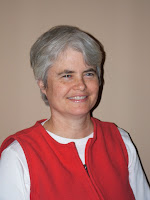
Here is a quote from Moshe Feldenkrais:
An action becomes easy to perform and the movement becomes light when the huge muscles of the center of the body do the bulk of the work and the limbs only direct the bones to the destination of the effort. (1)
As you can see in the photo, the woman is reaching for something with her left hand. She is also pushing with her right foot, rolling toward the reaching side, elongating her belly muscles and shifting her chest forward so she can more easily bring her head backward. The right arm helps to pull her head backward, and her eyes focus on her hand.
I find the quote and the woman's movement beautiful.
Healthy children have this coordination naturally. Through various causes in growing up, those “huge muscles” in the center of the body quit being activated, and the person -- you and me! -- becomes stiff. And then the smaller muscles have to take on “the bulk of the work.” It’s too much for them.
Feldenkrais is a way to re-active those central parts of yourself, regain beautiful, integrated movement and reduce strain on the smaller body parts.
(1) Feldenkrais, Moshe. Awareness through Movement. New York: Harper & Row, 1972, p 91.


